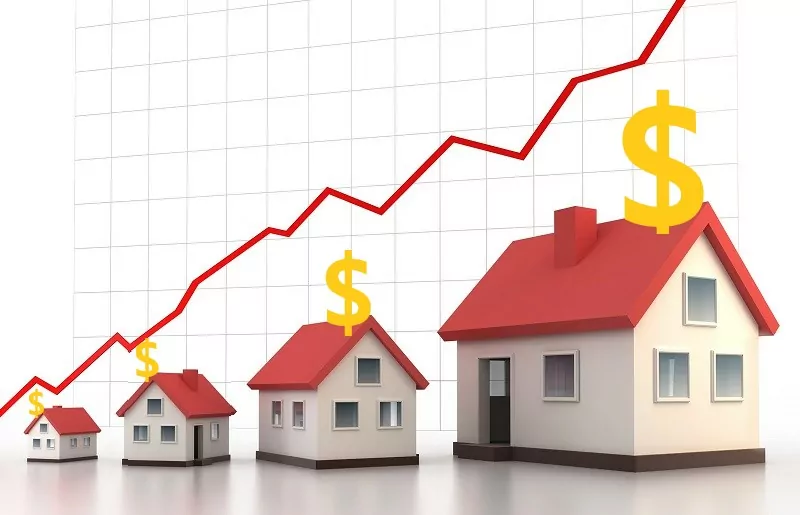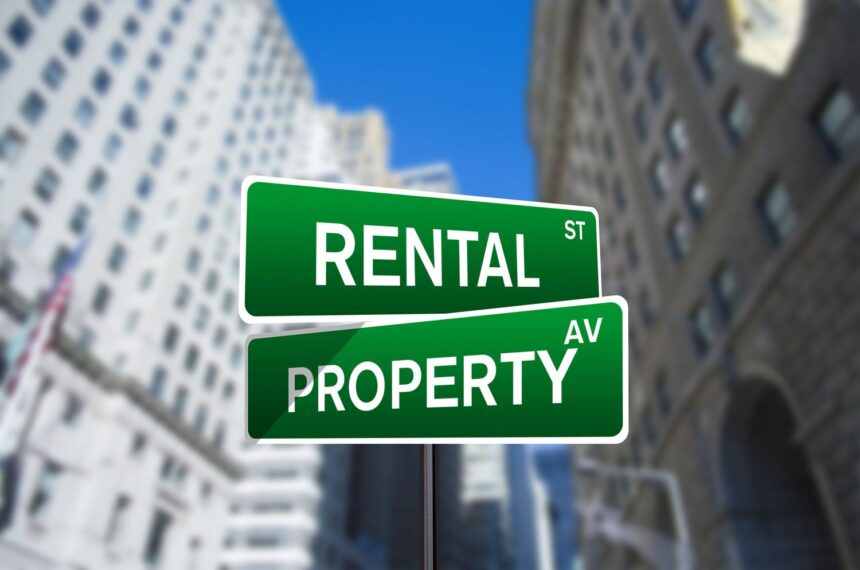Investing in rental properties remains one of the most enduring strategies in real estate investing for generating passive income and building long-term wealth. As the allure of consistent cash flow and property appreciation attracts both novice and seasoned investors, it is important to carefully dissect the multifaceted dynamics of owning and managing rental assets.
This comprehensive guide delves into the pros and cons of investing in rental properties, examines key considerations for aspiring landlords, outlines strategic approaches to maximize returns, and highlights common pitfalls to avoid. By the end of this exploration, you will be equipped with the insights needed to make informed decisions and craft a sustainable real estate investment plan.
Understanding Rental Property Investing
Defining Rental Property Investing
Rental property investing involves acquiring residential or commercial real estate with the intention of leasing it to tenants. Investors earn income through monthly rent payments, while seeking long-term gains from property value appreciation. Whether purchasing a single-family home, a multi-unit apartment building, or a mixed-use commercial space, each rental asset type carries unique risk–return characteristics within the broader real estate market.
Core Components: Cash Flow, Appreciation, and Equity Buildup
At its essence, rental property investing hinges on three pillars. First, positive cash flow emerges when rental income exceeds expenses such as mortgage payments, maintenance, insurance, and property taxes. Second, property appreciation—the increase in market value over time—bolsters net worth and provides equity that can be harnessed for future investments. Third, equity buildup refers to the gradual repayment of mortgage principal through rent-generated revenues, effectively transferring asset ownership from lender to investor.
The Pros of Investing in Rental Properties
Consistent Passive Income Stream
One of the most compelling advantages of rental properties lies in their potential to deliver consistent passive income. Unlike dividends that fluctuate with corporate profits, rental income is contractually obligated under lease agreements. Month after month, tenants remit rental payments that cover operating costs and yield surplus cash flow. For investors seeking supplemental income in retirement, supplementing wages, or diversifying revenue sources, this reliable inflow can underpin financial security.
Leverage Amplifies Returns on Equity
Real estate investors frequently employ leverage—financing property acquisitions through debt—to amplify returns on equity. By investing a 20% down payment on a rental property financed with an 80% mortgage, investors control the full asset while committing relatively modest capital upfront. As rents cover debt service and the property appreciates, equity grows at an accelerated pace compared to unleveraged scenarios. While leverage enhances profits when markets rise, prudent underwriting and stress testing of cash flow models safeguard against adverse turns.
Tax Advantages and Deductions
Rental property owners benefit from a suite of tax strategies that reduce taxable income, improve cash flow, and accelerate wealth accumulation. Key deductions include mortgage interest, property taxes, insurance premiums, maintenance and repair costs, and operating expenses such as advertising and legal fees. Depreciation—a non-cash expense that allocates the cost of the building (excluding land) over its useful life—provides substantial shelter from ordinary income. Furthermore, sophisticated investors may utilize 1031 like-kind exchanges to defer capital gains taxes when swapping one investment property for another of equal or greater value, thereby preserving investment capital for accelerated portfolio growth (Investopedia 1).
Portfolio Diversification and Inflation Hedge
Adding rental properties to an investment portfolio provides critical diversification benefits. Real estate often exhibits lower correlation with stock and bond markets, offering a buffer against equity volatility. In inflationary environments, rental income and property values tend to rise, preserving purchasing power and delivering real returns. This inflation hedge characteristic makes real estate an attractive asset class for investors concerned about currency devaluation and rising consumer prices.
Appreciation Potential in Growth Markets
Investing in markets with strong economic tailwinds—driven by population growth, job creation, infrastructure development, and quality-of-life improvements—can yield substantial appreciation. Strategic market research that examines demographic trends, income levels, and local government initiatives enables investors to identify emerging neighborhoods poised for value uplift. As property values ascend, the built-in wealth effect enhances net worth and creates borrowing power for further acquisitions.
The Cons of Investing in Rental Properties
Vacancy Risk and Cash Flow Interruptions
Vacancies represent one of the most significant challenges for rental property investors. Whenever a unit remains unoccupied, rental income halts while fixed costs—mortgage payments, insurance, taxes, and utilities—persist. Extended vacancies can drain reserves and strain profitability. Investors must allocate adequate contingency funds, implement proactive marketing strategies to minimize downtime, and conduct thorough tenant screenings to reduce turnover rates.
Maintenance, Repairs, and Unexpected Expenses
Owning real estate entails ongoing maintenance obligations and the potential for sudden, costly repairs. From routine inspections and landscaping to emergency plumbing or roof replacements, property owners must be financially prepared for variable expenditures. Unexpected repairs not budgeted for can erode cash flow and limit reinvestment options. Building relationships with trusted contractors, negotiating service contracts, and maintaining a rigorous preventive maintenance schedule help control these costs over time.
Management Time and Emotional Labor

Property management demands considerable time, energy, and emotional resilience. Landlords must handle tenant inquiries, enforce lease terms, coordinate maintenance, and navigate conflict resolution. Dealing with late payments, noise complaints, or property damage can be stressful and emotionally taxing. While self-managing maximizes cash flow, investors who lack the bandwidth or expertise often delegate responsibilities to professional property management firms—typically charging 8–12% of monthly rent—to streamline operations and ensure legal compliance.
Market Sensitivity and Interest Rate Exposure
Rental properties are not immune to macroeconomic forces. Interest rate fluctuations influence borrowing costs and buyer demand, while broader economic cycles impact employment levels and tenant affordability. Rising interest rates may increase mortgage rates and depress property values, potentially compressing cash flow yields. Comprehensive market analysis, conservative underwriting, and maintaining liquidity reserves are essential practices to mitigate cyclical risks.
Illiquidity and Transaction Costs
Real estate is inherently less liquid compared to publicly traded securities. Selling a property can take weeks or months, and often entails high transaction costs—including real estate agent commissions, title insurance, closing fees, and transfer taxes—that can amount to 6–10% of sale proceeds. Investors needing swift access to capital may find real estate assets difficult to liquidate in a pinch, underscoring the need to align investment horizons with liquidity requirements.
Key Considerations Before Acquiring Rental Properties
Conducting Thorough Market Research
Identifying the right market is paramount for rental property success. Investors should analyze demographic data, job growth statistics, median household incomes, and crime rates to assess demand drivers. Evaluating vacancy rates and average rents within targeted neighborhoods provides insights into income potential and competitive positioning. Engaging with local real estate agents, attending municipal planning sessions, and reviewing city council minutes can uncover upcoming infrastructure projects that may influence future property values.
Choosing the Optimal Property Type
Different rental property types cater to distinct tenant segments and yield profiles. Single-family homes often appeal to families seeking stability and privacy, while multi-family units may attract young professionals preferring proximity to urban employment centers. Condominium investments can offer lower maintenance responsibilities but may involve homeowner association fees and stricter regulations. Commercial rental properties—office, retail, industrial—require specialized knowledge of lease structures and tenant creditworthiness. Investors must align property selection with their financial goals, risk tolerance, and operational capabilities.
Financing Structures and Interest Rate Management
Assessing financing options is a critical step in underwriting potential investments. Fixed-rate mortgages provide payment certainty, shielding investors from interest rate volatility. Adjustable-rate mortgages can offer lower initial rates but carry repricing risk. Portfolio lenders, hard money loans, and private financing each come with distinct terms, rates, and underwriting criteria. Comparing loan-to-value ratios, interest rates, amortization periods, and prepayment penalties enables investors to optimize their capital structure for both cash flow stability and return maximization.
Evaluating Cash Flow Projections
Accurate cash flow analysis requires accounting for all revenue streams and expense categories. In addition to base rent, investors may collect fees for parking, pet rent, or utilities. Expenses include mortgage payments (principal and interest), property taxes, insurance, utilities (if landlord-paid), maintenance, property management fees, advertising, legal services, and capital expenditure reserves. Stress-testing cash flow under various scenarios—such as interest rate increases, rent stagnation, or unexpected major repairs—ensures the investment remains resilient across market cycles.
Legal and Regulatory Compliance
Landlords operate within a complex legal framework encompassing landlord–tenant statutes, fair housing laws, building codes, and eviction procedures. Lease agreements must clearly articulate rent terms, security deposit handling, maintenance responsibilities, and tenant obligations. Local ordinances—such as rent control regimes, habitability standards, and short-term rental regulations—impact operating flexibility and profitability. Consulting with experienced real estate attorneys and property managers safeguards compliance and minimizes litigation risks.
Strategies to Enhance Profitability and Mitigate Risks
Proactive Maintenance and Capital Planning
Implement a structured maintenance plan that schedules inspections, seasonal servicing, and minor repairs before they escalate. Regular HVAC tuning, roof assessments, and exterior upkeep extend asset life and preserve marketability. Establishing a capital reserves fund—typically 5–10% of gross rental income—ensures funds are available for both routine maintenance and unexpected capital expenditures, preventing reliance on emergency financing.
Dynamic Rent Pricing and Lease Terms
Leveraging rental data analytics enables investors to adjust pricing in line with market trends. Monitoring comparable listings, vacancy rates, and seasonal demand fluctuations informs optimal rent setting. Incorporating annual rent escalation clauses tied to inflation indices or predetermined percentages guarantees incremental revenue growth, while longer lease terms can reduce turnover costs and vacancy risk.
Tenant Screening and Retention Practices
High-quality tenants underpin property performance and reduce operational headaches. Implement rigorous screening protocols—credit checks, rental history verification, income qualification, and personal references—to identify reliable renters. Building rapport through prompt communication, respectful handling of maintenance requests, and fair lease renewal incentives fosters tenant loyalty and decreases turnover rates. Lower turnover translates into savings on marketing, cleaning, and unit refurbishment expenses.
Diversification Across Markets and Asset Classes
Concentrating investments in a single geographic location or property type amplifies exposure to localized downturns. Diversifying across multiple markets—urban versus suburban, coastal versus inland—and property classes—residential versus commercial—balances risk and return dynamics. Geographical diversification mitigates region-specific economic shocks, while spreading capital across different asset classes allows investors to capitalize on disparate market cycles.
Leveraging Technology for Operational Efficiency
Adopting property management software streamlines rent collection, maintenance tracking, financial reporting, and tenant communications. Automated portals enhance the renter experience by enabling online rent payments, maintenance requests, and lease renewals. Data analytics features provide actionable insights on occupancy trends, expense patterns, and portfolio performance, empowering investors to make informed, proactive decisions.
Advanced Financing and Tax Optimization Techniques
1031 Like-Kind Exchanges
A 1031 exchange allows investors to defer capital gains taxes by reinvesting proceeds from a property sale into another qualifying property of equal or greater value. By rolling over gains indefinitely, investors can compound wealth without immediate tax liabilities. However, strict timelines apply: investors must identify replacement properties within 45 days of sale and close within 180 days, necessitating careful transaction coordination (BiggerPockets 2).
Cost Segregation and Accelerated Depreciation
Cost segregation studies break down property components—such as carpeting, fixtures, and landscaping—into shorter depreciation schedules, accelerating tax deductions. By reclassifying assets into 5-, 7-, or 15-year categories, investors front-load depreciation benefits, reducing taxable income in early years and improving cash flow. Engaging qualified engineers or CPAs ensures compliance with IRS guidelines and maximizes depreciation benefits.
Opportunity Zones and Qualified Improvement Property
Investments in designated Qualified Opportunity Zones offer tax incentives for capital gains reinvested into eligible projects located in economically distressed areas. Investors defer and potentially reduce tax liabilities on original gains while benefiting from appreciation within the zone. Similarly, the Qualified Improvement Property bonus depreciation allows immediate expensing of interior building improvements completed after 2017, further enhancing tax efficiency for landlords undertaking renovations (Forbes 3).
Refinancing and Cash-Out Strategies
As property equity grows through appreciation and mortgage amortization, refinancing can unlock capital for additional investments or debt consolidation. Investors should evaluate current interest rates, closing costs, and loan-to-value thresholds to ensure refinancing yields a net financial benefit. Cash-out refinances tapping into equity provide liquidity without selling assets, enabling portfolio expansion and operational flexibility.
The Role of Professional Property Management
Balancing Control and Convenience
Self-management maximizes rental income by eliminating management fees but demands significant time commitment and expertise. Professional property managers typically charge 8–12% of monthly rent in exchange for comprehensive services: tenant acquisition, screening, leasing, rent collection, maintenance coordination, and eviction handling. For investors with larger portfolios or limited availability, outsourcing property management streamlines operations and ensures adherence to legal and ethical standards.
Tenant Acquisition and Marketing Expertise
Property management companies deploy targeted marketing campaigns across online listing platforms, social media channels, and local networks to attract qualified tenants. They craft compelling property descriptions, coordinate professional photography, and respond rapidly to inquiries. This expertise reduces vacancy lengths and positions properties competitively within the rental market.
Maintenance Vendor Networks and Cost Controls
Established property managers maintain relationships with licensed contractors and vendors, negotiating volume discounts and priority scheduling. Centralized maintenance request systems allow efficient work order management and transparent invoicing. These economies of scale can lower per-service costs compared to individually sourcing contractors.
Legal Compliance and Eviction Management
Navigating eviction proceedings and fair housing laws demands legal acumen and meticulous documentation. Property management firms oversee lease enforcement, coordinate legal filings, and represent landlords in court if necessary. Their familiarity with local statutes helps mitigate risks of procedural errors and costly litigation.
Real-World Case Studies
Case Study A: Urban Multi-Family Turnaround
An investor purchased a dilapidated four-unit building in a rapidly growing downtown neighborhood. Through targeted renovations—modernizing kitchens, upgrading flooring, and enhancing curb appeal—the property’s rent potential increased significantly. Leveraging local demand from young professionals and remote workers relocating to the city, occupancy reached 100% within two months. Rental revenues rose by 40%, while property value appreciated by 25% over three years, yielding a total annualized return of 20%.
Case Study B: Suburban Single-Family Learning Experience
A novice landlord acquired a single-family home in a suburb lacking strong employment drivers. Insufficient demographic research led to underestimating local income levels and demand elasticity. Despite setting below-market rents, the property cycled through multiple tenants due to job relocations and affordability constraints. Extended vacancies and repeated turnover costs eroded cash reserves, ultimately forcing a sale at a modest profit but highlighting the importance of market due diligence.
Case Study C: Diversified Small Portfolio Strategy
A mid-career professional assembled a portfolio of six rental properties across three metropolitan areas. By blending single-family homes in high-growth suburbs with duplexes in up-and-coming urban corridors and a small retail storefront in a stable commercial district, the investor balanced risk and return. Geographic diversification insulated the portfolio from local downturns, and cash flow from stronger markets supported renovations in underperforming assets. Over five years, the portfolio delivered an average annual return of 15%, with minimal need for emergency capital injections.
Frequently Asked Questions
How much capital do I need to start investing in rental properties?
The required capital depends on market prices, down payment requirements, transaction costs, and reserves. In many U.S. markets, investors may need 20–25% down plus closing costs and contingency funds, which could total $30,000 to $50,000 or more for a median-priced property. Creative financing options—such as FHA loans requiring 3.5% down for owner-occupants—can lower entry barriers but involve occupancy stipulations.
What is the ideal cash reserve for a rental property?
Industry best practice recommends maintaining reserves equivalent to at least three to six months of operating expenses—including mortgage payments, taxes, insurance, and maintenance. This cushion helps weather vacancy spells, unexpected repairs, and market fluctuations without jeopardizing financial stability.
Should I self-manage or hire a property management company?
Self-management maximizes net income but demands time, legal knowledge, and conflict-resolution skills. For investors with fewer than two properties who possess property management experience, self-management may be cost-effective. However, those with larger portfolios, limited availability, or desire for a hands-off approach often benefit from professional managers, despite the fee impact on cash flow.
How do I finance renovation projects on rental properties?
Renovation financing options include conventional refinance loans, FHA 203(k) rehabilitation loans, HomeStyle renovation mortgages, hard money loans, and home equity lines of credit (HELOCs). Each option varies in terms, interest rates, loan-to-value limits, and draw schedules. Evaluating project scope, timeline, and risk tolerance is essential when selecting the optimal financing avenue.
Can rental property investing work during economic downturns?
While no asset class is immune to downturns, rental properties with strong fundamentals—diversified tenant base, conservative underwriting, and adequate reserves—tend to weather recessions better than highly leveraged ventures. In challenging markets, offering incentives like flexible lease terms, including utilities, or offering property upgrades can maintain occupancy levels and cash flow.
Investing in rental properties
Investing in rental properties offers a powerful avenue for wealth creation through passive income, equity accumulation, and property appreciation. The ability to leverage financing, benefit from tax advantages, and diversify an overall investment portfolio underscores the enduring appeal of real estate investing. However, investors must also confront the realities of vacancy risk, maintenance obligations, management demands, market sensitivity, and liquidity constraints.
Success in rental property investing hinges on rigorous market research, prudent financial modeling, strategic property management, and ongoing portfolio optimization. By embracing proactive maintenance protocols, leveraging technology, diversifying across markets and assets, and exploiting advanced tax strategies such as 1031 exchanges and accelerated depreciation, investors can amplify returns while mitigating inherent risks. Whether you are embarking on your first rental purchase or seeking to scale an existing portfolio, the balanced application of these principles will position you for sustained growth and resilience in today’s dynamic real estate landscape.
Source Links
- https://www.investopedia.com/articles/mortgages-real-estate/08/invest-rental-property.asp
- https://www.biggerpockets.com/guides/rental-property-investing
- https://www.forbes.com/advisor/investing/rental-property-pros-cons/
- https://realestate.usnews.com/real-estate/articles/pros-and-cons-of-investing-in-rental-properties
- https://www.nareit.com/real-estate-investment/rental-property-investment-strategies

